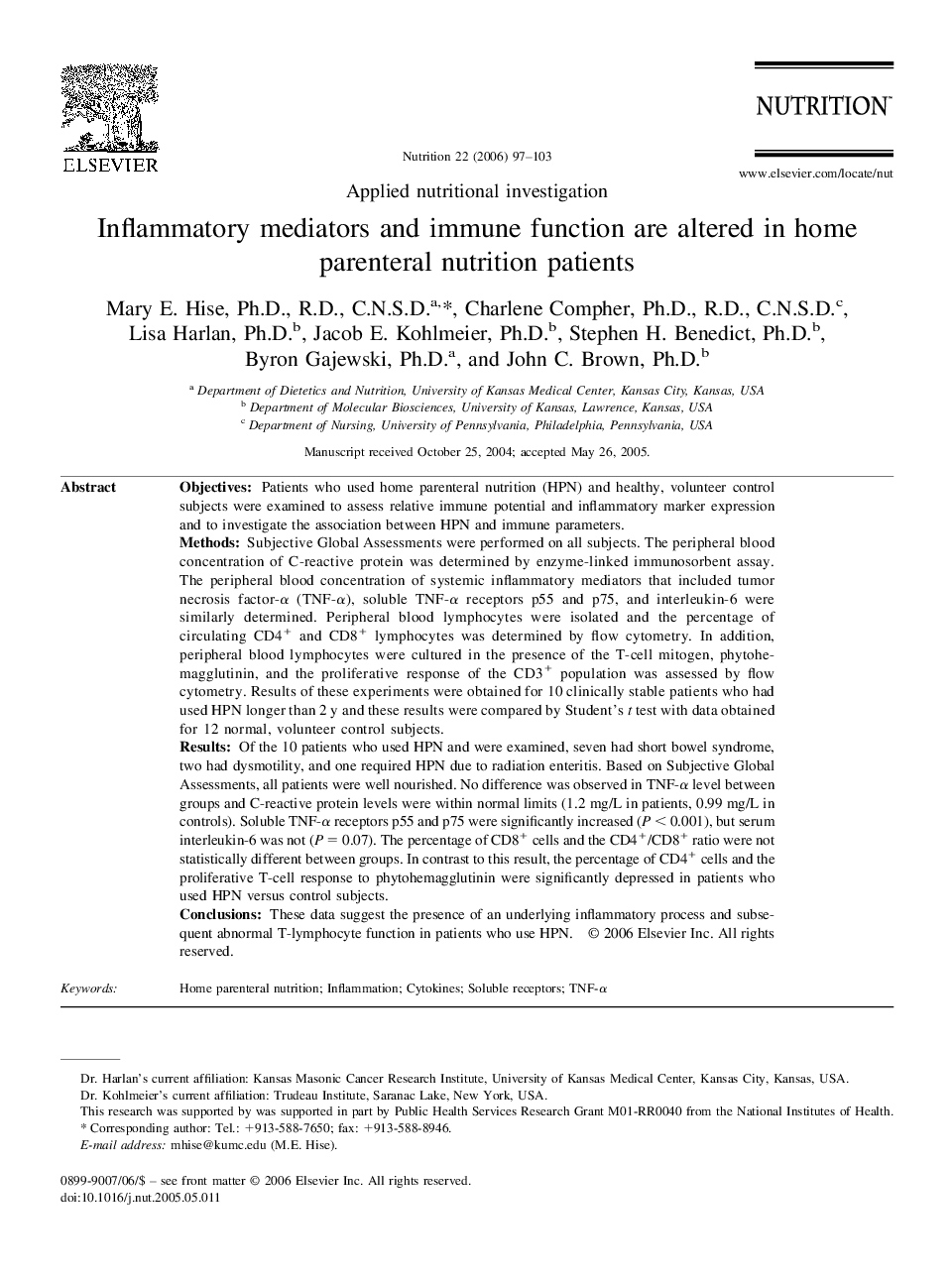| Article ID | Journal | Published Year | Pages | File Type |
|---|---|---|---|---|
| 3277586 | Nutrition | 2006 | 7 Pages |
ObjectivesPatients who used home parenteral nutrition (HPN) and healthy, volunteer control subjects were examined to assess relative immune potential and inflammatory marker expression and to investigate the association between HPN and immune parameters.MethodsSubjective Global Assessments were performed on all subjects. The peripheral blood concentration of C-reactive protein was determined by enzyme-linked immunosorbent assay. The peripheral blood concentration of systemic inflammatory mediators that included tumor necrosis factor-α (TNF-α), soluble TNF-α receptors p55 and p75, and interleukin-6 were similarly determined. Peripheral blood lymphocytes were isolated and the percentage of circulating CD4+ and CD8+ lymphocytes was determined by flow cytometry. In addition, peripheral blood lymphocytes were cultured in the presence of the T-cell mitogen, phytohemagglutinin, and the proliferative response of the CD3+ population was assessed by flow cytometry. Results of these experiments were obtained for 10 clinically stable patients who had used HPN longer than 2 y and these results were compared by Student’s t test with data obtained for 12 normal, volunteer control subjects.ResultsOf the 10 patients who used HPN and were examined, seven had short bowel syndrome, two had dysmotility, and one required HPN due to radiation enteritis. Based on Subjective Global Assessments, all patients were well nourished. No difference was observed in TNF-α level between groups and C-reactive protein levels were within normal limits (1.2 mg/L in patients, 0.99 mg/L in controls). Soluble TNF-α receptors p55 and p75 were significantly increased (P < 0.001), but serum interleukin-6 was not (P = 0.07). The percentage of CD8+ cells and the CD4+/CD8+ ratio were not statistically different between groups. In contrast to this result, the percentage of CD4+ cells and the proliferative T-cell response to phytohemagglutinin were significantly depressed in patients who used HPN versus control subjects.ConclusionsThese data suggest the presence of an underlying inflammatory process and subsequent abnormal T-lymphocyte function in patients who use HPN.
